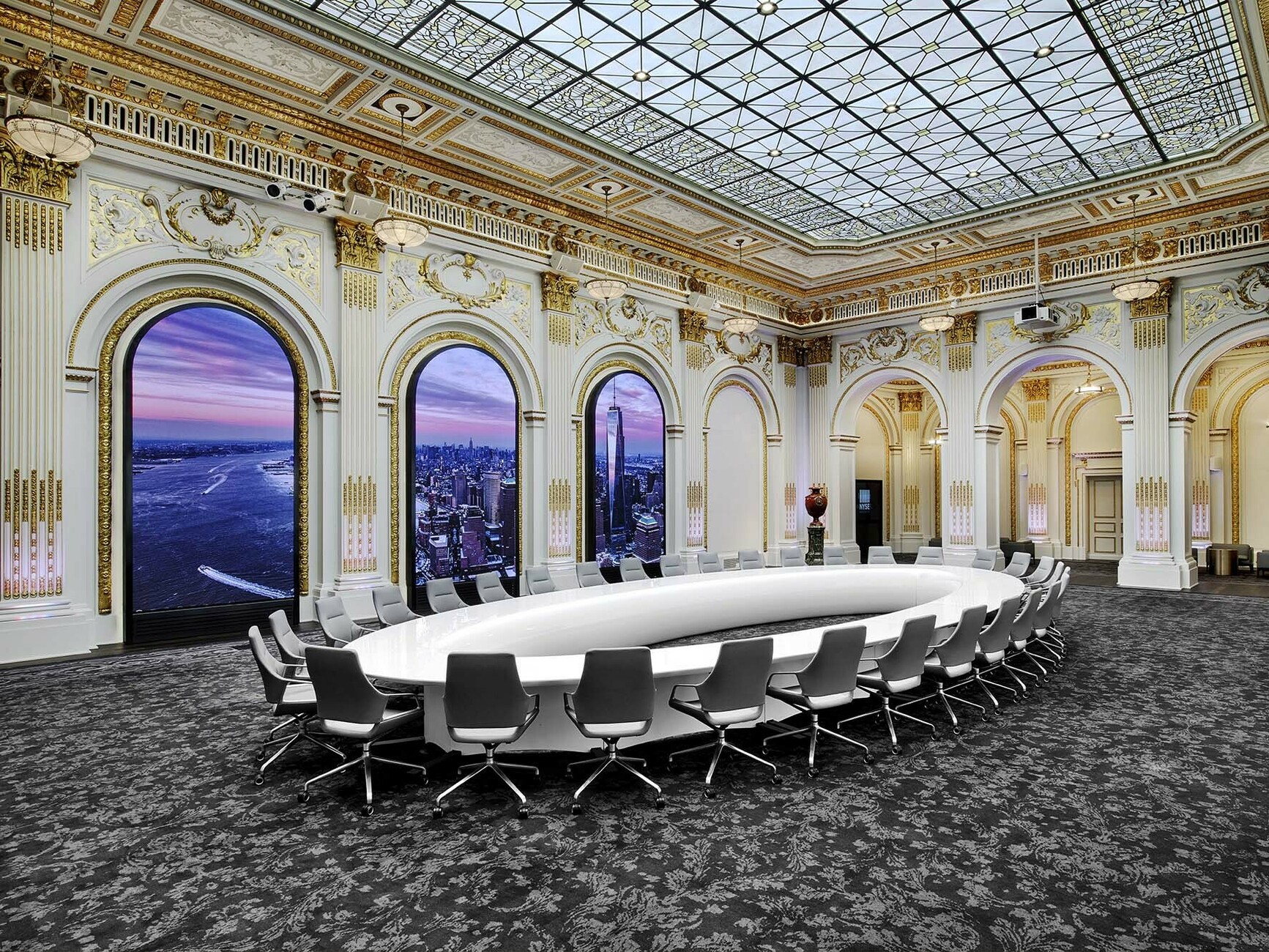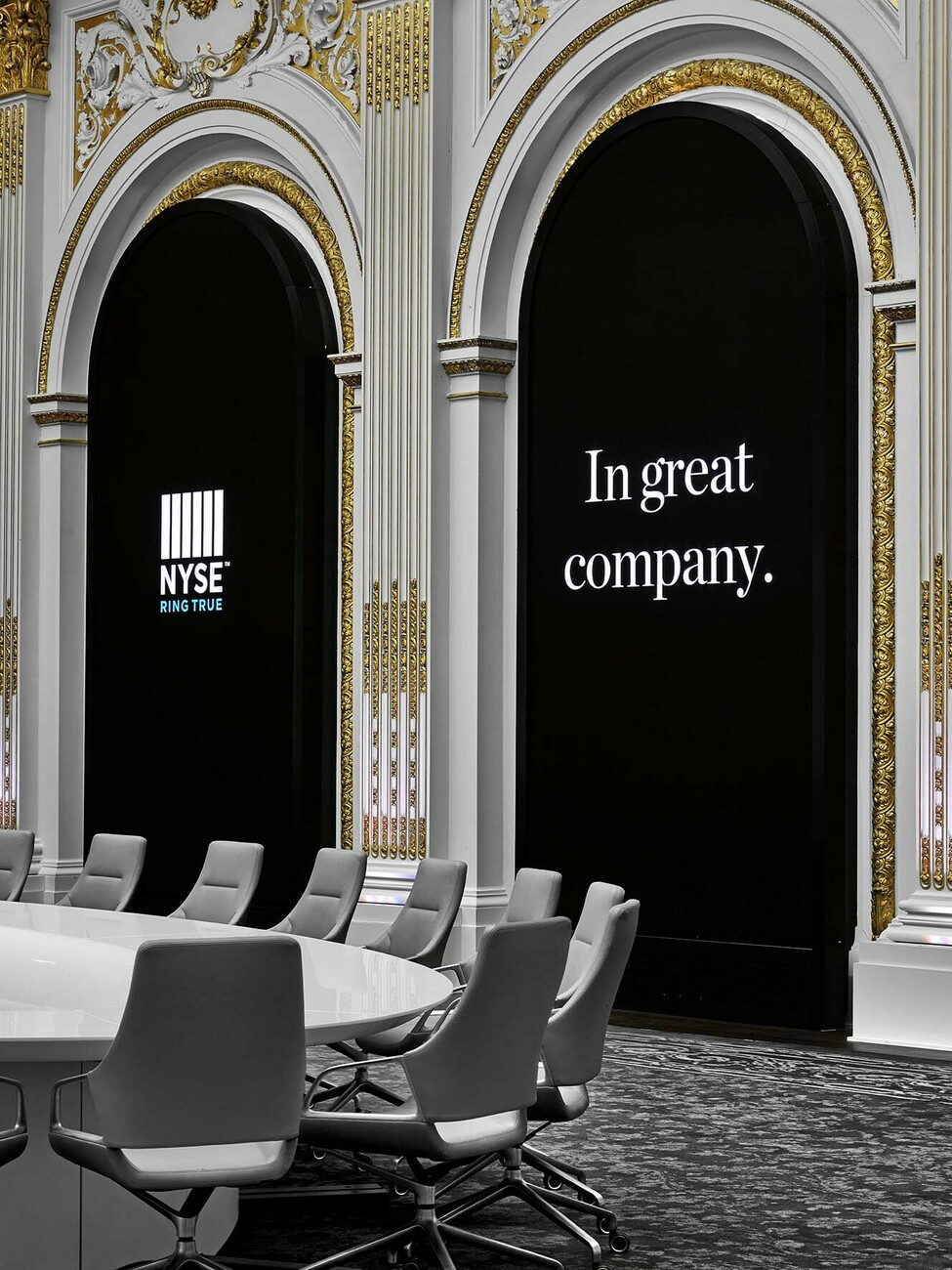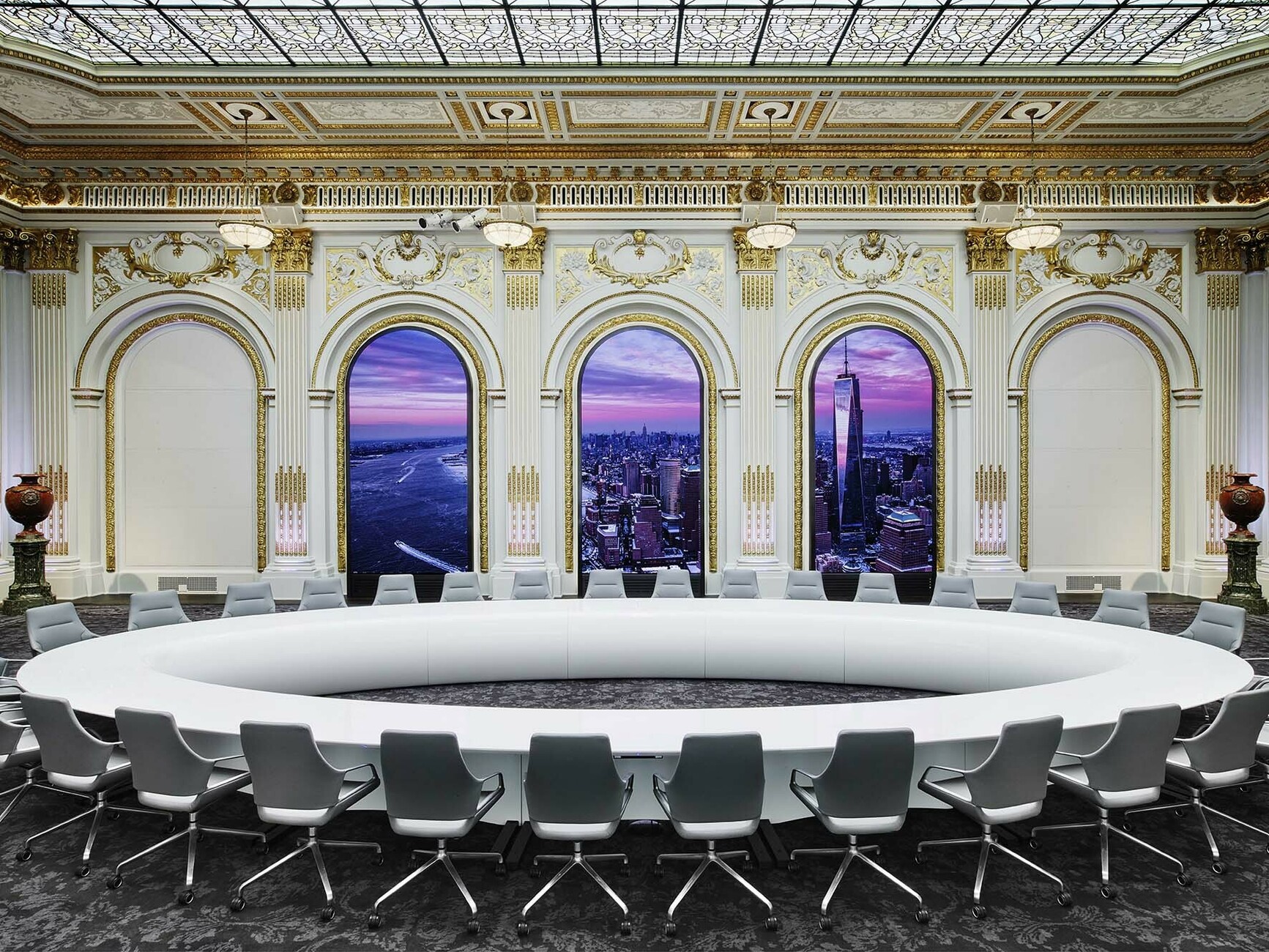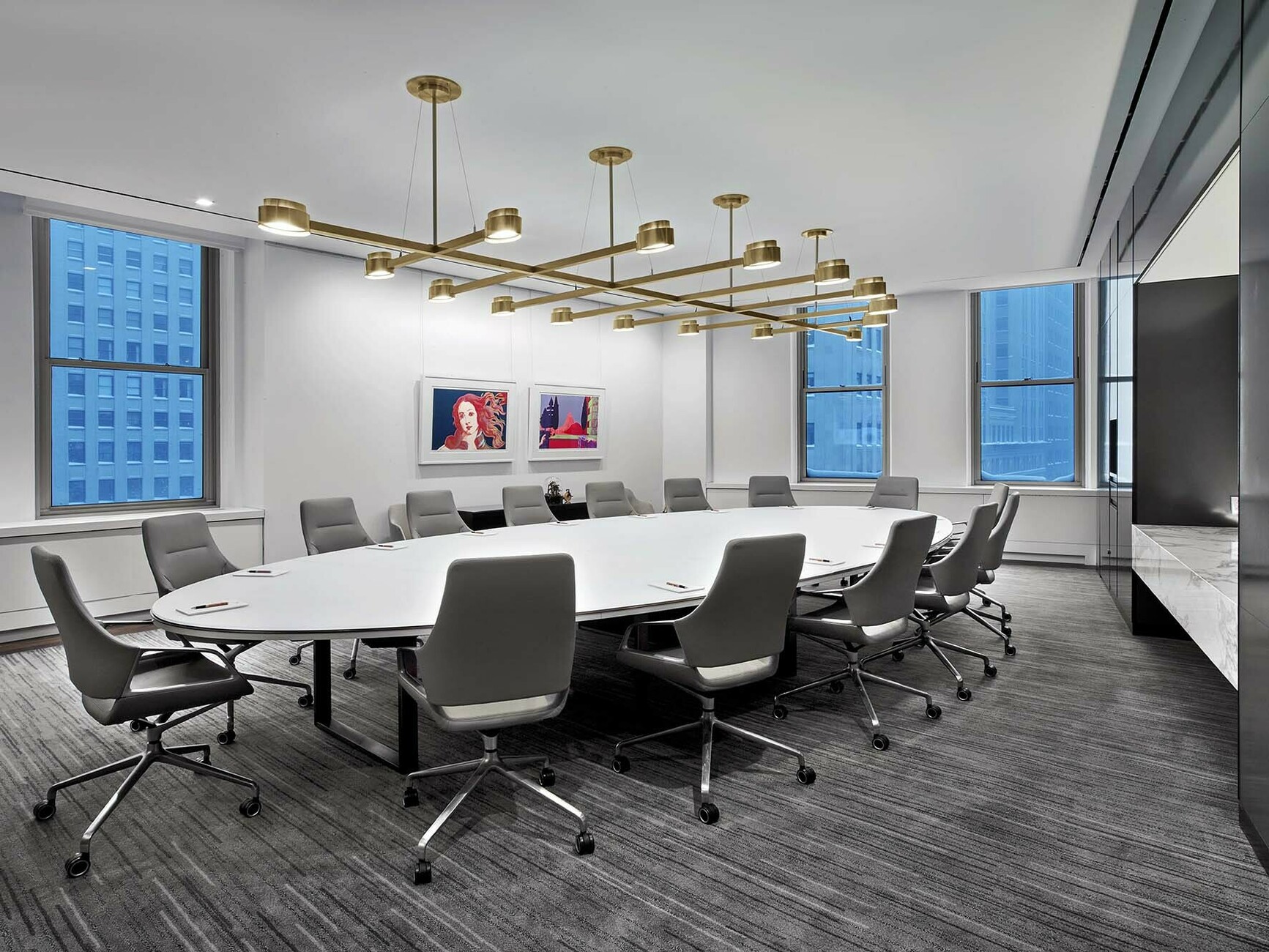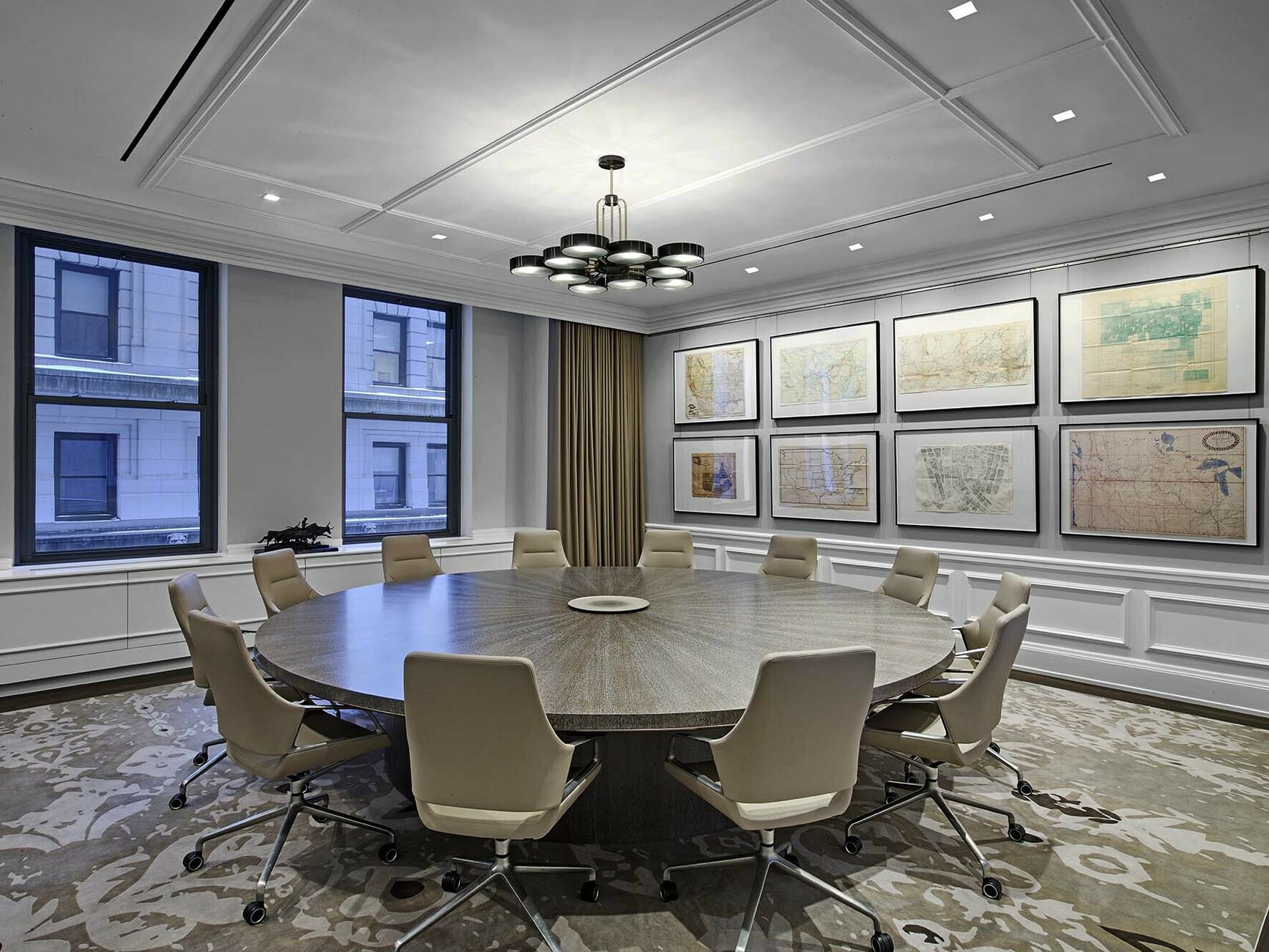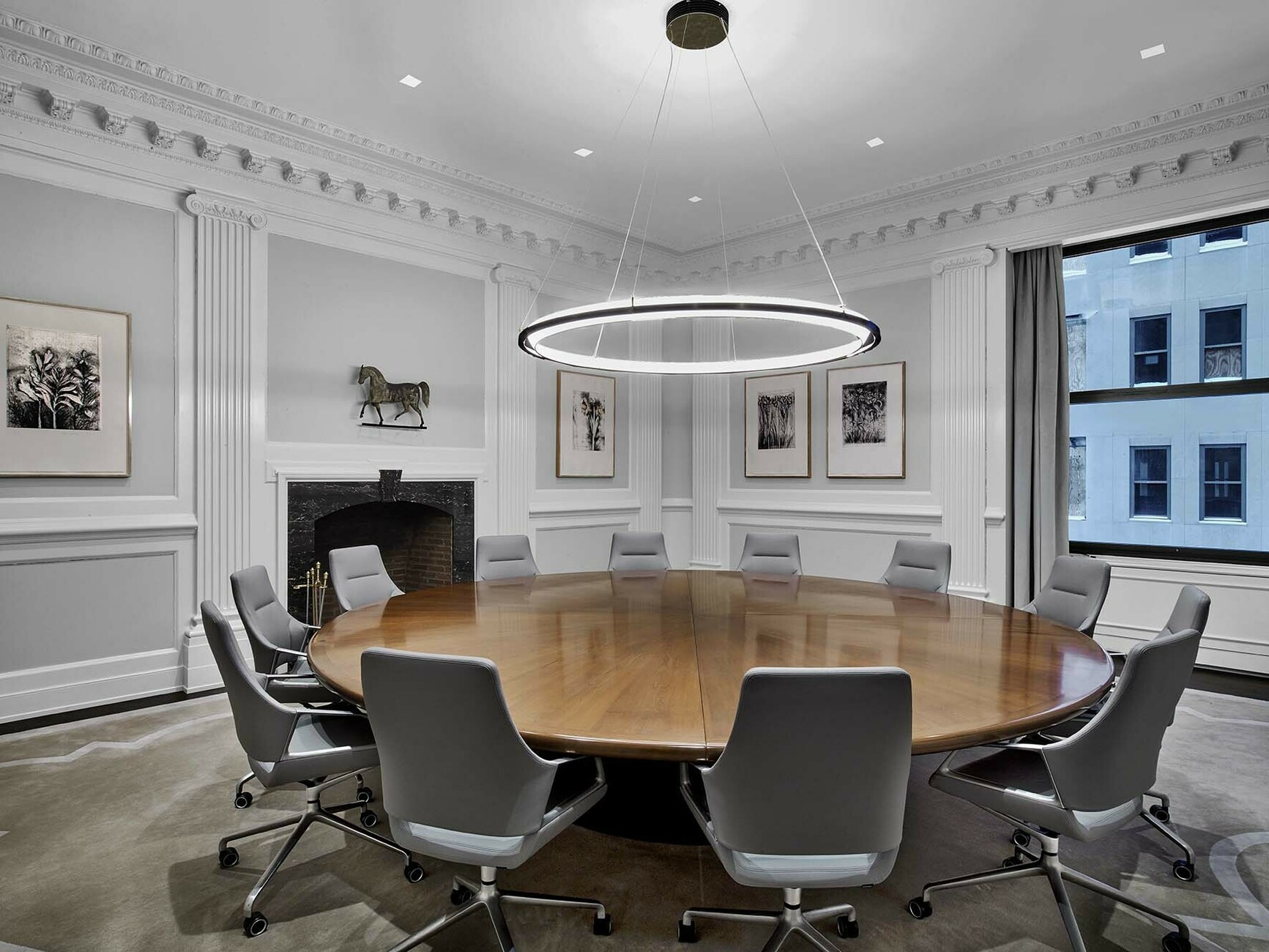Taking a seat at the stock exchange
The Stock exchange? There's a confusing hustle and bustle in front of ticker boards, and people gesticulating wildly on their phones. This is what New York City's Wall Street is all about! These images, which most people inevitably conjure up when they hear the word “stock exchange”, may have been true a few years ago, but they are now a thing of the past. On New York's Wall Street – or more correctly, the New York Stock Exchange – bidding on the trading floor ceased when trading became electronic in the 2000s. So what to do with the space that has since become available?
The interior of the neoclassical building – the New York Stock Exchange has been located in the building on Wall Street since 1903 – has been changed many times and adapted to the needs and technical innovations of the day. The upper floors are now used as offices and for meetings and events. The outdated storeys were recently modernised according to designs by the New York firms Rottet Studio and Studios Architecture. This has resulted in more efficient workplaces and larger meeting areas for teams, as well as conference rooms for several hundred people. The digital infrastructure is now up to date as well, and is properly integrated into the historic surroundings. Most importantly, however, earlier renovations have been dismantled and the rooms restored to their original state. For example, the architects uncovered and restored the hidden leaded glass ceilings, while antechambers that were walled off in the course of an earlier modernisation were opened up and reconnected to each other. The historic rooms are now complemented by modern elements, such as art by David Hockney and Andy Warhol, and contemporary furniture.
But as different as these impressive historical rooms may be, there is now one attribute that unifies them all: People meet and sit together in all of the rooms. Central to this is therefore seating that not only brings with it the highest level of comfort, but also a special shape that blends in with the neoclassical rooms. A decision was made to furnish the rooms with Wilkhahn's Graph conference chair, which, with its slender contours, brings a breath of fresh air to the somewhat limited and long unchanged assortment of conference chairs. The Graph was designed for the northern German family business by the Stuttgart-based designers jehs+laub. Its shape is the result of a trick for which the organic seat shell was first cut horizontally and vertically before being reassembled in a modified form. This gives the chair a light and dynamic appearance, despite its generous upholstery. The result is a fascinating interplay of flowing form and clear lines of open and closed surfaces. A special upholstery technique ensures that the Graph will remain comfortable throughout its life: a foam-covered padded cushion with wave springs surrounds the steel frame of the seat and back.
Even though everything inside Wall Street is directed towards the future and the historic rooms have entered into a symbiosis with the needs of today, time has left no traces on the exterior of the building: The antique portico of the New York Stock Exchange, with its six Corinthian columns, continues to welcome numerous visitors and guests, having now become the historical face of the stock exchange within. Its address, in a little twist of history, is actually 18 Board Street, a cross street to Wall Street proper.
